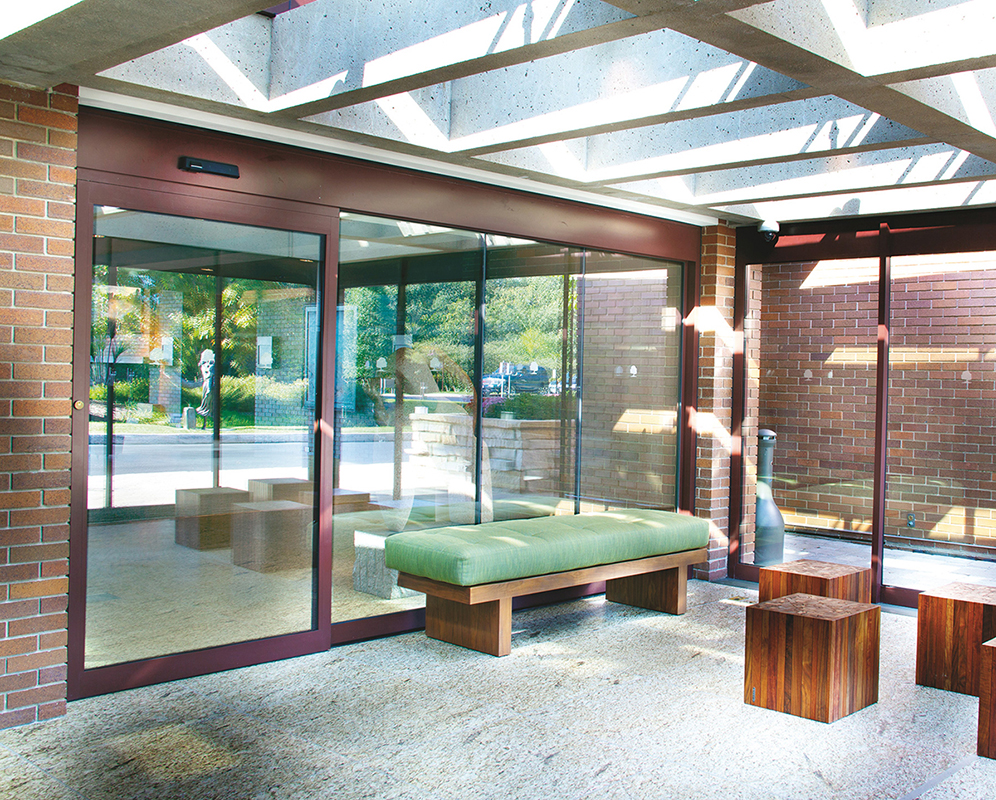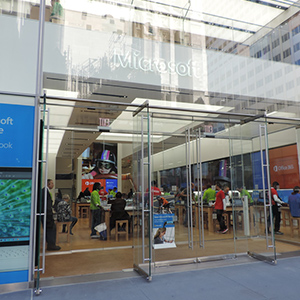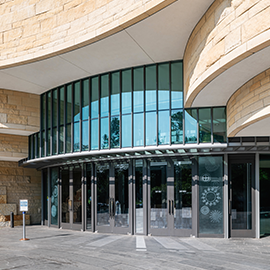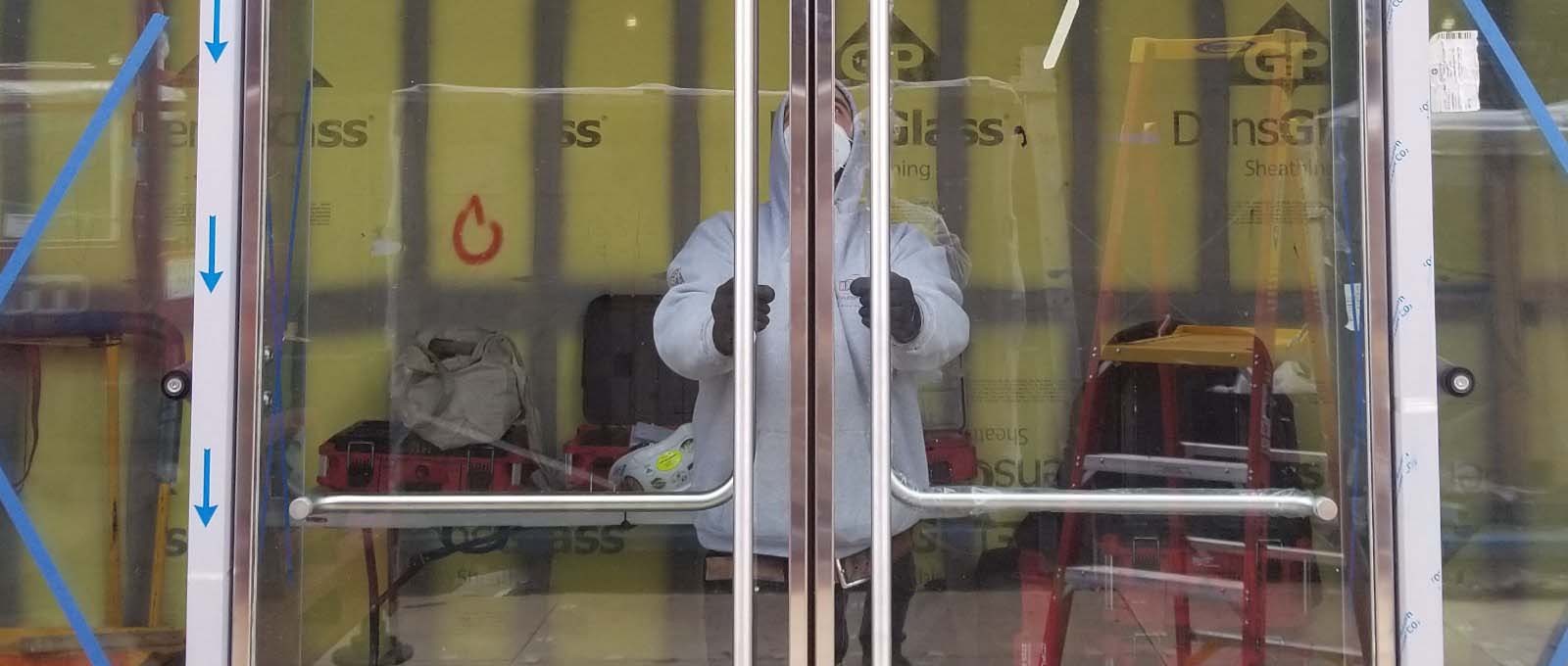When you want to keep the right people moving freely and the wrong people out, building access control systems are the backbone of a smart, secure facility. From small offices to sprawling campuses, access control determines who can enter, where they can go, and when they can go there.
What Is an Access Control System?
An access control system is a coordinated set of hardware and software that manages entry to a building or space. At a high level, it authenticates an identity, verifies permission, actuates a lock or door operator, and logs the event. Think of it as a traffic controller for your facility’s thresholds—lobbies, perimeter doors, stairwells, labs, storage rooms, server closets, parking gates, and more.
Core components typically include:
- Credentials: What a person presents to prove identity—keycards or fobs, mobile credentials, PINs, or biometrics like fingerprints or facial recognition.
- Readers: Devices that capture and transmit credential data—proximity readers, keypad readers, biometric scanners, intercom stations with video, or multi-technology readers that handle cards and phones.
- Controllers: The decision-makers. These are panels or edge devices that compare the presented credential against an access policy and decide whether to grant entry.
- Electronic locking hardware: Electric strikes, magnetic locks, electrified mortise locks, and similar devices physically secure the opening.
- Door position and request-to-exit (REX) sensors: Provide status and safe egress signaling.
- Management software: The brain and recordkeeper, where administrators define access levels, schedules, alarms, and reporting.
How it works: A person presents a credential at a reader. The reader passes the data to a controller or to cloud software via a secure connection. The system checks time-based rules and door-specific permissions. If permitted, the controller triggers the door hardware—unlocking a latch, releasing a maglock, or signaling an automatic operator to open. The system logs the event for audits and analytics.
Built for life safety and everyday use
A well-designed system balances protection with life safety and accessibility. That means preserving free egress in emergencies, respecting fire and building codes, enabling safe operation for people with disabilities, and integrating with alarm systems and elevator controls. You should expect modern systems to support “fail-safe” or “fail-secure” behaviors as appropriate for each opening, provide local override for first responders, and allow emergency unlocks when needed.
Where door automation fits
Access control doesn’t exist in isolation. At the door, it must work seamlessly with automatic operators for swing, sliding, and revolving doors, plus safety sensors that detect people in the path of a moving door. When a credential is approved, the access system sends a signal—often a dry contact or relay output—to the door operator. The operator then opens the door, monitors it through position sensors, and safely closes according to configured timing and safety inputs. For busy lobbies, healthcare facilities, retail, or campuses, this integration is what turns a secure entry into a frictionless one.
Types of Building Access Solutions
Access control is not one-size-fits-all. The right mix depends on your risk profile, traffic patterns, budget, and compliance needs. Below are the most common categories you’ll encounter, along with specialty options you can layer on as your facility evolves.
Electronic Keycard Systems
What they are: Keycard and fob systems remain the workhorse of commercial access. They use proximity (125 kHz) or smartcard (13.56 MHz) technologies to store unique identifiers. Users tap or present a card; the reader transmits the ID for verification.
Why they’re popular:
- Simplicity and speed. Cards are familiar, inexpensive, and fast to issue or revoke.
- Scalability. From a single door to thousands across multiple sites, card-based systems scale well.
- Compatibility. Many multi-tech readers can handle legacy prox cards and modern smart credentials, easing migrations.
Key considerations:
- Security levels vary. Older prox cards are convenient but easier to clone than encrypted smartcards. Organizations with higher risk should standardize on secure smart credentials.
- Lifecycle management. Cards get lost. Strong policies for deactivating lost credentials and auditing cardholders help keep risk low.
- Mobile evolution. Many facilities pair cards with mobile credentials to give users more flexibility while phasing out plastic over time.
Best-fit use cases: Office campuses, education buildings, retail back-of-house, residential lobbies, and anywhere you need dependable, high-throughput entry with manageable cost.
Biometric Access Systems
What they are: Biometric systems verify something you are—fingerprints, facial geometry, iris patterns, or palm vein structures. Modern sensors incorporate “liveness detection” to reduce spoofing and typically encrypt templates rather than storing raw images.
Why they’re compelling:
- High assurance. Difficult to share or lose, biometrics can raise the security bar compared to cards or PINs alone.
- Convenience. Hands-free or touch-minimal experiences can speed throughput and keep traffic moving in sensitive areas.
- Multi-factor ready. Combine biometrics with cards or mobile credentials for step-up security at critical doors.
Key considerations:
- Privacy and policy. Biometric deployments require clear consent, robust data protection, and adherence to applicable privacy regulations.
- Environmental fit. Lighting, throughput, and hygiene expectations matter—especially for facial readers or any touch-based sensors.
- Redundancy. Always provide fallback methods (e.g., a card or mobile credential) for users who can’t enroll or when environmental conditions aren’t ideal.
Best-fit use cases: Data centers, pharmaceutical and R&D labs, executive suites, high-security storage areas, and anywhere that demands strong identity assurance without sacrificing speed.
Cloud-Based Access Management
What it is: Instead of hosting your own server on-site, cloud-based access centralizes administration in a secure, web-managed platform. Edge controllers at the doors connect over the network and continue to function even if the internet drops, syncing events and policies when connectivity returns.
Why it’s gaining traction:
- Anywhere administration. Add users, adjust schedules, or unlock a door remotely from a browser or mobile app.
- Faster updates. Software enhancements, security patches, and new features roll out without on-prem maintenance.
- APIs and integrations. Connect with HRIS, visitor management, identity providers (SSO), video intercoms, building automation, and tenant apps.
- Simplified deployments. Power-over-Ethernet (PoE) edge controllers reduce panel wiring and cost at many openings.
Key considerations:
- Cybersecurity posture. Demand strong encryption, role-based access, multi-factor authentication, and clear data retention policies.
- Uptime and resilience. Look for offline capability at the door and documented recovery procedures for network outages.
- Cost model. Subscription pricing can be predictable; ensure it aligns with your growth and multi-site needs.
Best-fit use cases: Distributed portfolios, property managers, multi-tenant environments, progressive workplaces, and organizations wanting to reduce on-prem server complexity.
Beyond those three pillars, you’ll frequently layer in:
- Mobile credentials (BLE/NFC): Let users tap with their smartphone or watch—improves convenience and reduces plastic.
- Keypad/PIN at low-risk doors: Cost-effective but best used with a second factor in higher-risk scenarios.
- Video intercom for visitors and deliveries: Streamlines temporary access while preserving an audit trail.
- Turnstiles and speed lanes: Manage lobby throughput and tie identity to elevator destination control.
- Elevator and parking controls: Extend access policies vertically and to the perimeter for full-campus coverage.
Benefits of Access Control Systems
Modern access control does more than lock and unlock. It improves safety, operational efficiency, user experience, and even energy performance when paired with automated doors.
Stronger security with clear accountability
With access control, you replace anonymous keys with auditable identities. Every event—valid entry, denied attempt, door forced open—creates a time-stamped record. That audit trail supports investigations, compliance requirements, and continuous improvement. You can tighten policies for sensitive spaces, enforce two-person rules, or set anti-passback constraints to reduce tailgating.
Streamlined convenience for occupants and guests
When access works the way people expect, friction drops. Employees badge once at the lobby turnstile and ride directly to their floor with the right elevator access. Contractors get time-bound credentials that expire automatically. Visitors receive QR codes or mobile passes in advance and glide through the front door after announcing themselves on a video intercom—no paper badges or long lines.
Operational efficiency and lower lifetime costs
Access control centralizes tasks that used to be manual: rekeying locks, collecting keys from former employees, or staffing entrances during busy periods. Cloud administration reduces IT overhead, while standardized hardware and PoE edge devices can simplify installation and maintenance. Over time, better control of loss and liability often offsets the upfront investment.
Data and insight for better facility planning
Event data helps you understand how spaces are used. Which entrances are overloaded at 8:45 a.m.? Are there wings that sit idle after hours? These insights steer staffing, cleaning schedules, and security patrols—and can inform future buildouts, renovations, and lease negotiations.
Health, hygiene, and the non-contact experience
Since COVID-19, many organizations have prioritized non-contact door operation to reduce touchpoints. Access systems can trigger automatic swing, sliding, or revolving doors so occupants don’t need to push or pull. You can add touchless wave-to-open sensors inside for egress, pair with mobile credentials to avoid handling cards, and tune door operators for smooth, hygienic flow. Non-contact doesn’t just feel modern—it can be a meaningful part of your wellness and accessibility strategy.
Accessibility and inclusive design
Automated doors paired with access control support people using wheelchairs, walkers, or strollers—and anyone carrying packages or equipment. Properly configured operators ensure adequate opening time, smooth start/stop motion, and obstacle detection. Integrate with push plates or touchless triggers as needed, and ensure your system supports quick assistance overrides for staff.
Life safety and code alignment
Secure doesn’t mean sealed. Doors must allow safe egress during fire alarms and power failures where required. That’s why professional integrators coordinate access rules with door automation controls, fire alarm systems, and door hardware that’s appropriate for each path of egress. Thoughtful design selects fail-safe or fail-secure behaviors by door type and occupancy.
Energy-conscious entrances
Automatic doors can contribute to energy-conscious operation when tuned correctly—limiting unnecessary air exchange, closing promptly after passage, and, in the case of revolving doors, helping separate interior and exterior environments. Access control helps by preventing doors from standing open unnecessarily, aligning door operator timing with real traffic, and coordinating vestibule behavior.
How access control and automated doors work together (in practice)
- Signal flow: The access controller’s “grant” signal triggers the door operator, which opens the door within defined safety parameters.
- Safety sensors: Presence sensors, safety beams, and door position switches ensure the door moves only when it’s safe.
- Egress logic: Request-to-exit devices (motion sensors or push-to-exit controls) signal the controller for a safe, compliant exit.
- Monitoring: The system logs door status—held-open alarms, forced-open events, or repeated access denials—so teams can respond quickly.
- Visitor and delivery workflows: Intercom approval can temporarily release the operator, time-limit door hold-open, and capture video for the audit trail.
Getting that choreography right is where experienced door automation professionals add real value—matching operators, locks, sensors, and control logic to your actual traffic patterns and compliance needs.
Planning considerations for your project
- Entry types and volumes. A high-traffic sliding entrance calls for different hardware and timing than a rarely used side door.
- Risk zones. Not every door needs the same security level. Reserve biometrics and multi-factor for critical spaces.
- Credential strategy. Cards, mobile, biometrics—or a hybrid. Consider your users and change management plan.
- Cloud vs. on-prem. Balance IT preferences, cyber posture, and multi-site management needs.
- Integration roadmap. Identify adjacent systems—video, intercom, HR, tenant apps, building management—so you can integrate from day one or phase in later.
- Future flexibility. Choose readers and controllers that support multiple credential technologies and open standards to avoid dead ends.
- Door automation alignment. Engage your door automation partner early to match operator types (swing, slide, revolving), safety sensors, and energy-conscious settings with your access logic.
- Service and support. Look for providers with responsive field teams and access to industry-leading products, so you get both dependable hardware and knowledgeable technicians.
Bringing it together: Why the right partner matters
The technology is only half the story; the design and implementation are what make a system dependable day after day. Coordinating access control with door automation requires careful selection of locks and operators, correct wiring and relay logic, smart placement of sensors, and precise tuning. It’s also where nuances—like anti-tailgate logic at a sliding entrance or time adjustments for a revolving door—turn a “working” system into a great one.
A capable partner will:
- Assess your entrances, traffic patterns, and code requirements.
- Recommend operator types—automatic and manual, swing, slide, and revolving doors—that fit your space and aesthetics.
- Specify compatible readers, controllers, locks, and sensors that create a smooth, non-contact flow when desired.
- Configure schedules and access levels to match your real-world operations.
- Provide proactive maintenance and swift support to minimize downtime.
- Align with standard automated door energy compliance and other relevant guidelines for a balanced approach to security, accessibility, and efficiency.
Work with Door Automation Corporation
If you’re ready to elevate your entrances with intelligent access and effortless motion, Door Automation Corporation is here to help. We provide solutions for convenient access to commercial spaces, combining deep expertise in automatic and manual swing, slide, and revolving doors with modern access control integrations that make every entrance functional, dependable, and secure.
- Our reliable professionals work with industry-leading products to deliver functional, dependable, and secure entryways that stand up to real-world use.
- Looking to reduce touchpoints? We can implement non-contact door operation through touchless sensors, mobile credentials, and automated operators—options that became essential during COVID-19 and remain a smart standard for wellness-forward facilities.
- Planning a new project or modernization? We provide new automatic doors that align with standard automated door energy compliance, and we’ll coordinate your access logic to support energy-conscious operation.
- From concept to commissioning, we often serve as design consultants, collaborating with top architectural firms in New York City to ensure that aesthetics, accessibility, safety, and security all work in harmony.
- Most importantly, our skilled team is here when you need us—ready to diagnose issues, fine-tune performance, and keep your doors and access control running smoothly.
Let’s design entrances that welcome, protect, and perform. Contact us today to discuss your project and explore the best path forward.







